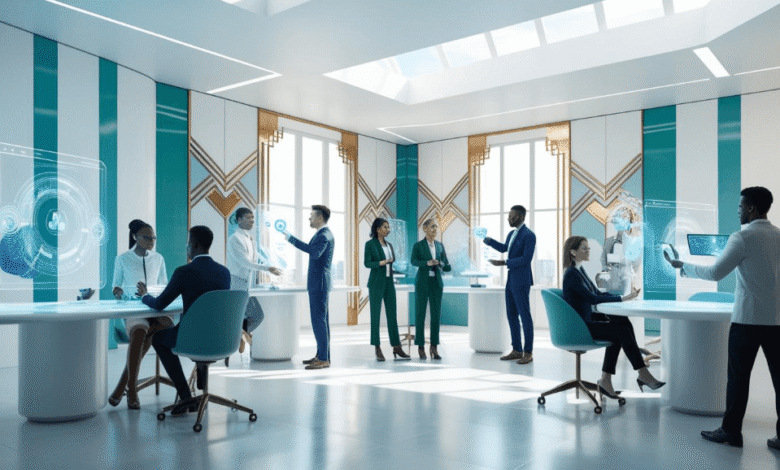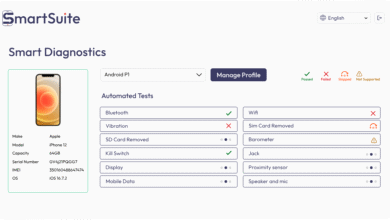Smart Office: Redefining the Future of Workspaces Through Technology

In today’s technology-driven era, the workplace is undergoing a radical transformation. The traditional office, once defined by cubicles, whiteboards, and paperwork, is being reimagined through the lens of innovation. At the heart of this evolution lies the smart office an intelligent, connected, and highly efficient environment designed to enhance employee productivity, workplace flexibility, and operational efficiency.
As businesses continue to embrace digital transformation, the demand for smart office solutions is surging. Whether it’s through IoT-enabled devices, AI-driven systems, or cloud-based collaboration tools, smart offices are now central to building modern work environments that adapt to how people work—not the other way around.
What Is a Smart Office?
A smart office refers to a workspace that uses integrated technology to streamline day-to-day operations, enhance communication, automate routine tasks, and create a comfortable, data-informed environment. The goal is not just convenience but to foster smarter work habits, stronger employee engagement, and improved business outcomes.
Smart offices incorporate a wide range of tech elements, such as:
- Internet of Things (IoT) sensors and devices
- Artificial intelligence (AI) for predictive maintenance or resource planning
- Cloud-based project and communication platforms
- Smart lighting, HVAC, and security systems
- Automated meeting room booking systems
- Occupancy analytics for space optimization
By leveraging these tools, businesses can make data-driven decisions that boost both employee experience and operational effectiveness.
See also: Editing for Narrative Storytelling: Tools and Techniques
The Rise of the Smart Office: Why Now?
1. Hybrid Work Models
Post-pandemic, many companies have adopted hybrid working arrangements, which demand a more flexible and tech-enabled office infrastructure. Smart offices allow employees to seamlessly transition between working remotely and being on-site.
2. Employee Expectations
Today’s workforce—particularly Gen Z and millennials—expect technologically advanced environments. From wireless charging desks to voice-activated meeting rooms, smart tech has become a symbol of modernity and innovation.
3. Sustainability Goals
Smart systems help optimize energy usage and reduce waste through automation and real-time monitoring. For example, lighting that adjusts based on natural sunlight or room occupancy significantly cuts power usage.
4. Data-Driven Management
Smart offices provide valuable insights into how space is used, which teams collaborate most, and where resources are being underutilized. This data supports better decision-making at the executive level.
Core Features of a Smart Office
Let’s break down the key components that make a smart office truly “smart”:
📶 Connected Infrastructure
From smart thermostats to AI-based virtual assistants, every piece of hardware and software in a smart office is connected through a central system or platform.
💡 Smart Lighting and Climate Control
Smart lighting systems can adjust brightness depending on the time of day or occupancy levels. Similarly, HVAC systems can learn preferences and adjust temperature for individual zones, improving comfort while reducing energy bills.
🧠 AI and Machine Learning
AI can help with scheduling, predictive maintenance of office equipment, resource allocation, and even employee well-being analysis. Machine learning systems can identify patterns and recommend optimizations.
🧩 Collaboration and Communication Tools
Integrated platforms like Microsoft Teams, Slack, and Zoom are enhanced in smart offices by hardware such as interactive digital whiteboards, noise-canceling conference rooms, and automated scheduling tools.
📊 Sensors and Analytics
Sensors collect real-time data on motion, occupancy, temperature, and air quality. This data is processed to improve ventilation, reduce congestion, and optimize how meeting rooms or desks are used.
Benefits of a Smart Office
A well-implemented smart office setup can deliver tangible benefits across multiple dimensions:
1. Improved Employee Productivity
Smart offices automate mundane tasks like setting up meeting rooms or adjusting lights, freeing up employees to focus on meaningful work. Ergonomic furniture paired with intelligent design boosts comfort and efficiency.
2. Enhanced Workplace Flexibility
Hot-desking systems and mobile access to resources support hybrid and remote workers. Staff can easily check in, find a desk, or reserve a meeting room without administrative headaches.
3. Cost Savings
Optimizing space usage, automating lighting, and improving energy efficiency help reduce operational costs.
Challenges in Implementing a Smart Office
Despite the benefits, transitioning to a smart office isn’t without its hurdles:
- Initial Investment: Upgrading infrastructure and systems can be costly.
- Integration Complexity: Ensuring different systems and platforms work together can require expert IT planning.
- Change Management: Employees may resist change, especially if they’re unfamiliar with smart systems.
What the Future Holds
The smart office isn’t just a passing trend—it’s the blueprint for the future of work.
- Voice-activated workspaces
- AI-driven HR systems for employee morale tracking
- Augmented Reality (AR) for remote collaboration
- Real-time language translation in meetings
- Robotic office assistants
The convergence of AI, cloud computing, and sustainable design will make tomorrow’s smart office even more intuitive, inclusive, and interactive.
Final Thoughts
The concept of the smart office is reshaping how companies operate, how employees engage, and how workspaces are designed. In a city like Hong Kong or in global markets alike, adopting smart office technology is no longer a luxury—it’s a strategic advantage.
For businesses aiming to remain competitive, productive, and future-ready, the smart office is not just an upgrade—it’s a necessity.




